Kidney Physiology and Urine Production Overview 13.1
1/27
There's no tags or description
Looks like no tags are added yet.
Name | Mastery | Learn | Test | Matching | Spaced |
|---|
No study sessions yet.
28 Terms
What are the main functions of the kidneys?
Excretion of metabolic waste, regulation of solute and ion concentrations, regulation of blood volume and pressure, maintenance of acid-base balance, production of hormones, and gluconeogenesis during fasting.
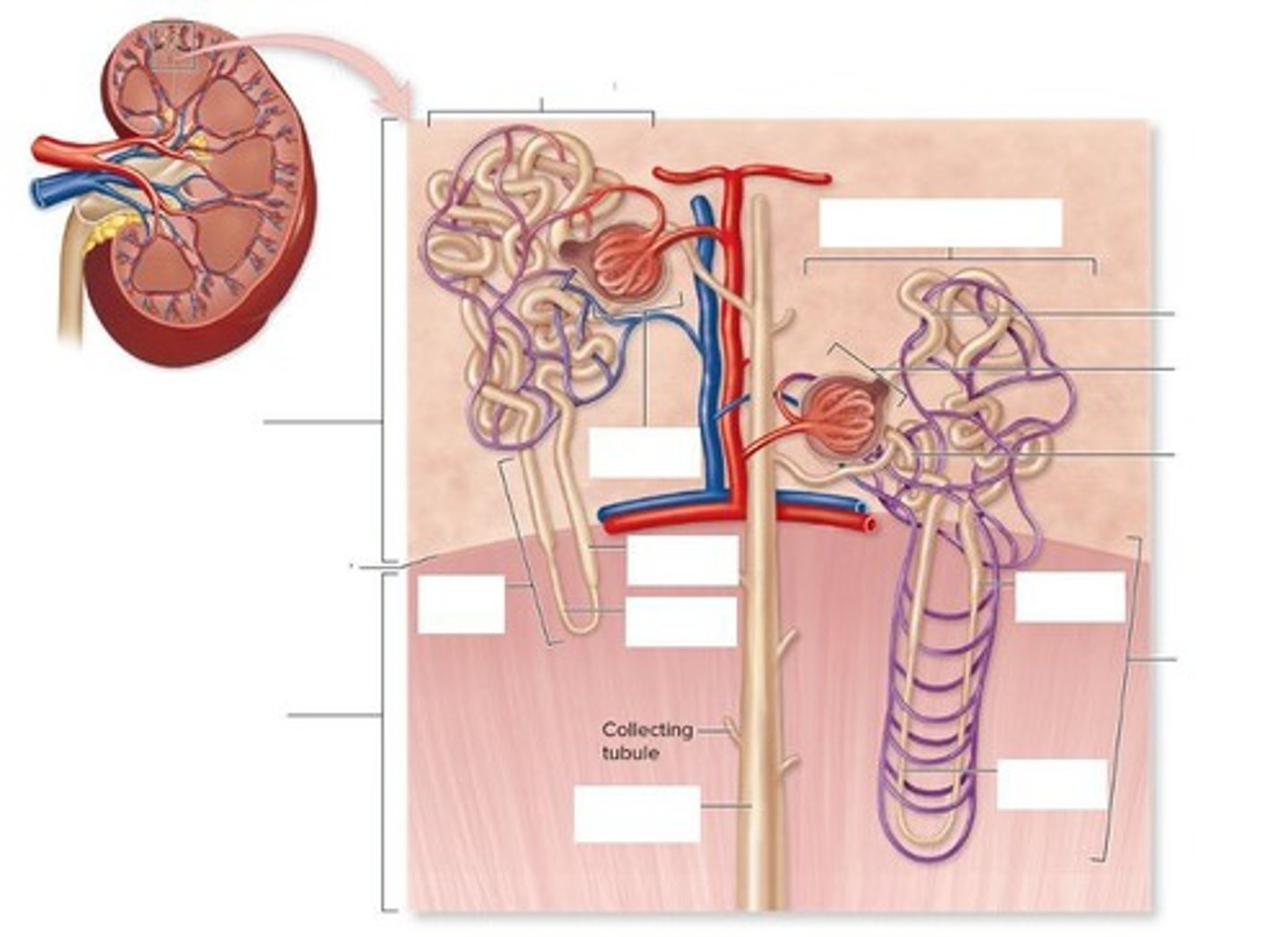
What waste products are removed by the kidneys?
Urea and uric acid, which are byproducts of protein and nucleic acid breakdown.
What are the functional units of the kidneys?
Nephrons.

What are the two main components of a nephron?
Renal corpuscle and renal tubule.
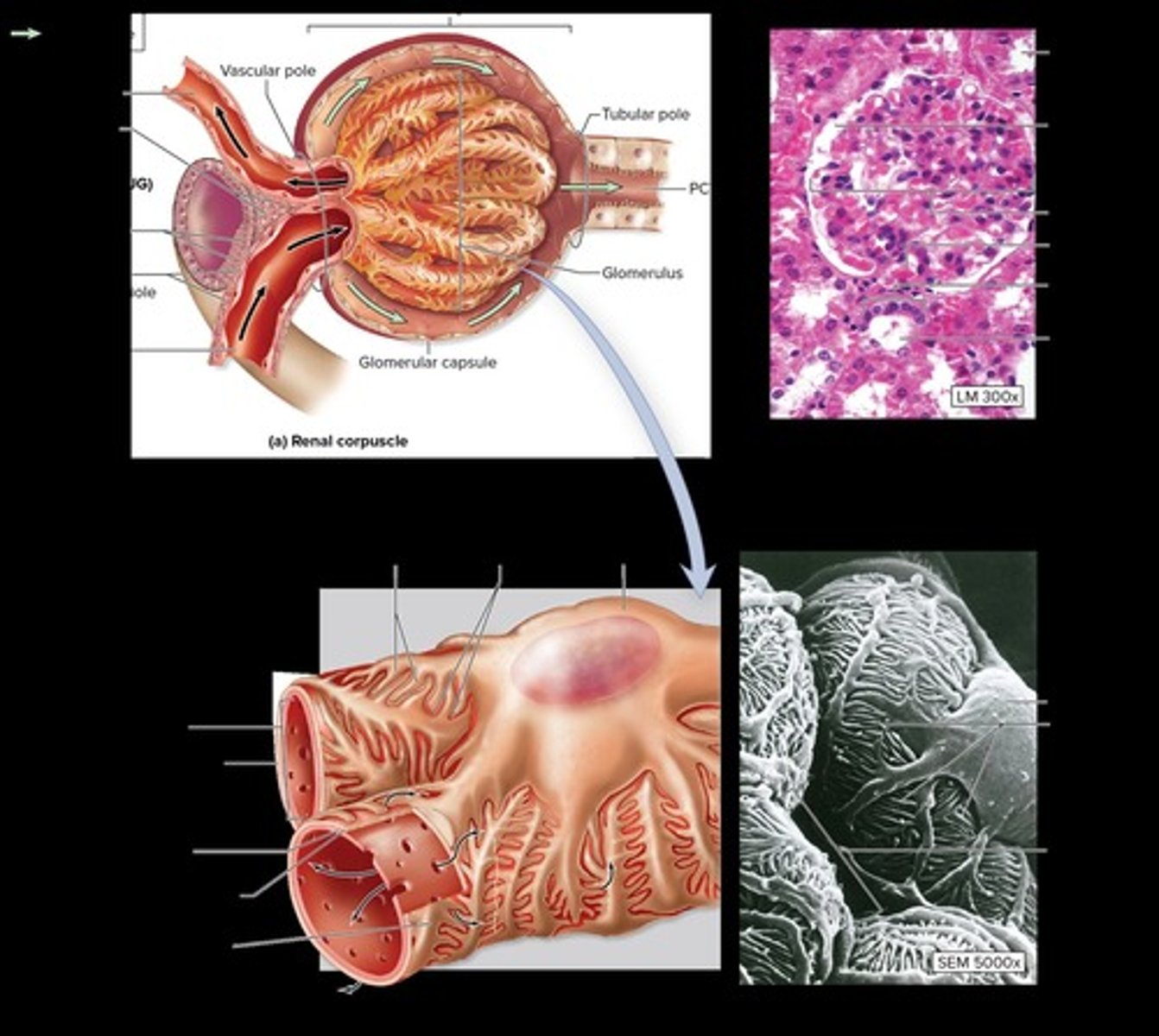
What is the role of the renal corpuscle?
It is where blood enters and filtrate is produced.
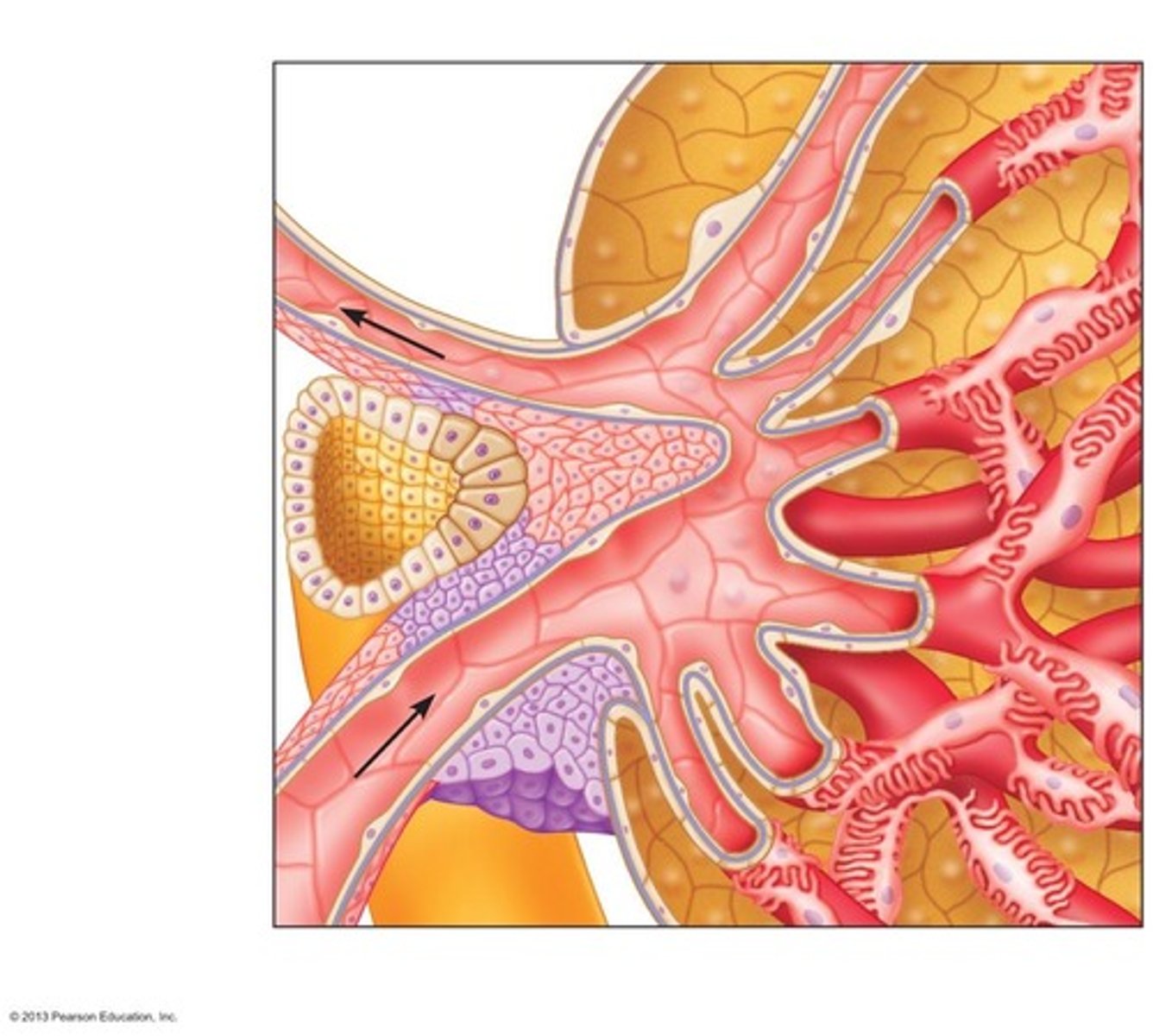
What is the structure that surrounds the glomerulus?
The Glomerular (Bowman's) Capsule.
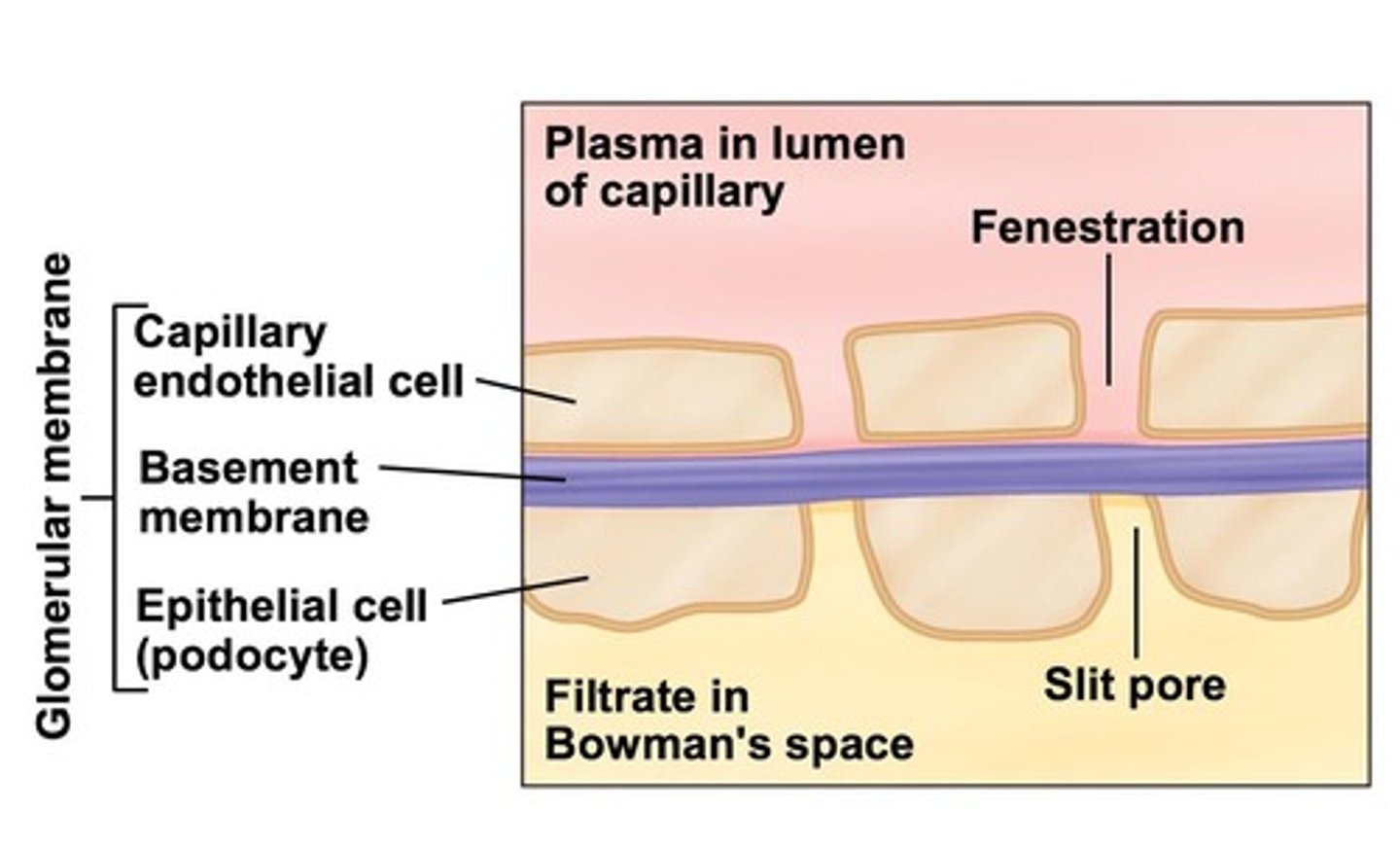
What are the two layers of the Glomerular Capsule?
The parietal layer (flattened epithelial cells) and the visceral layer (podocytes with filtration slits).
What is the function of the glomerulus?
It is a fenestrated capillary that filters blood under high pressure.
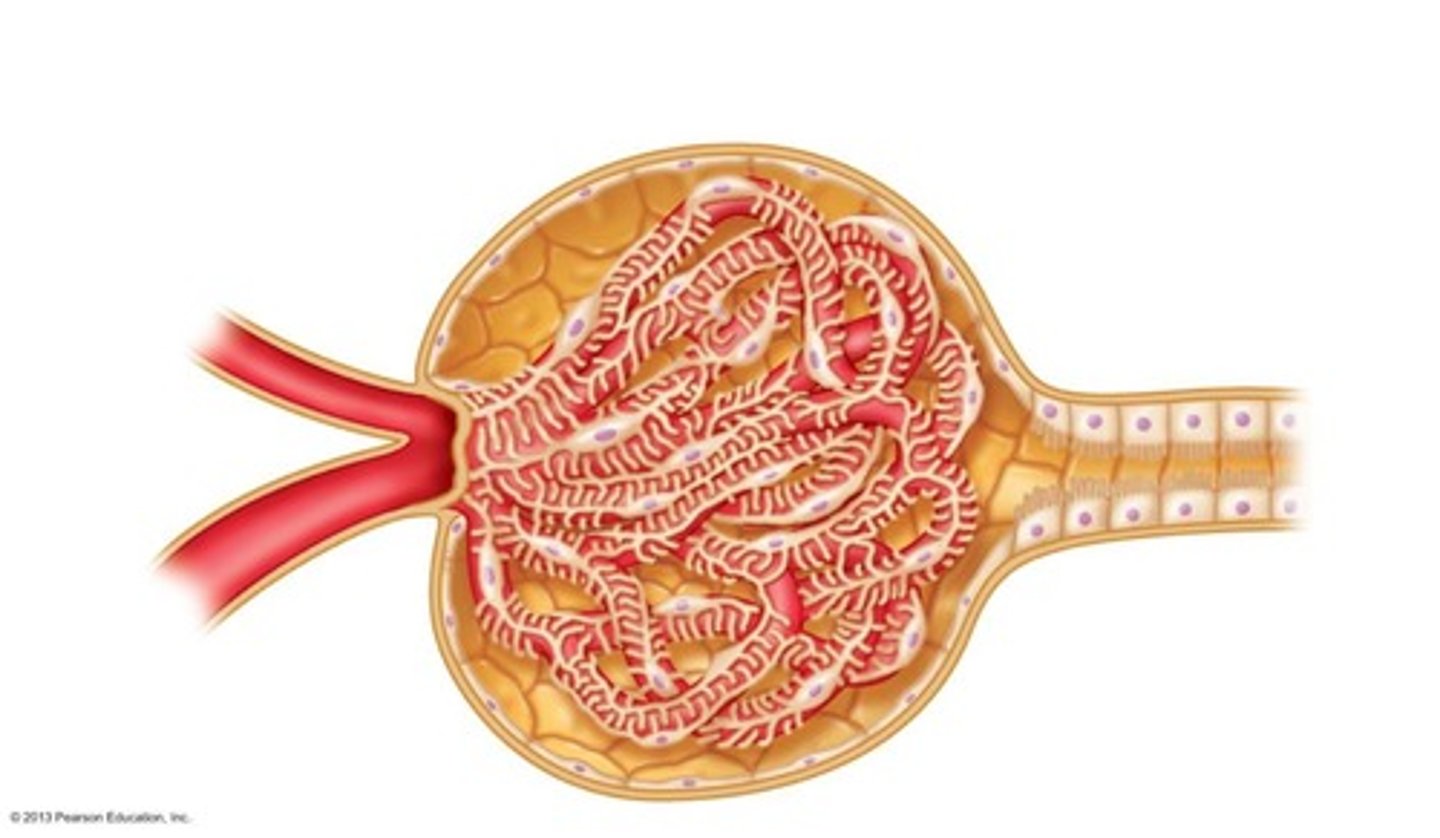
What are the two types of nephrons?
Cortical nephrons and juxtamedullary nephrons.
How do cortical nephrons differ from juxtamedullary nephrons?
Cortical nephrons are mostly in the renal cortex with short loops, while juxtamedullary nephrons have long loops that extend into the renal medulla.
What is the role of the distal convoluted tubule (DCT)?
It is the last portion of the nephron tubule connected to the nephron loop and collecting duct.
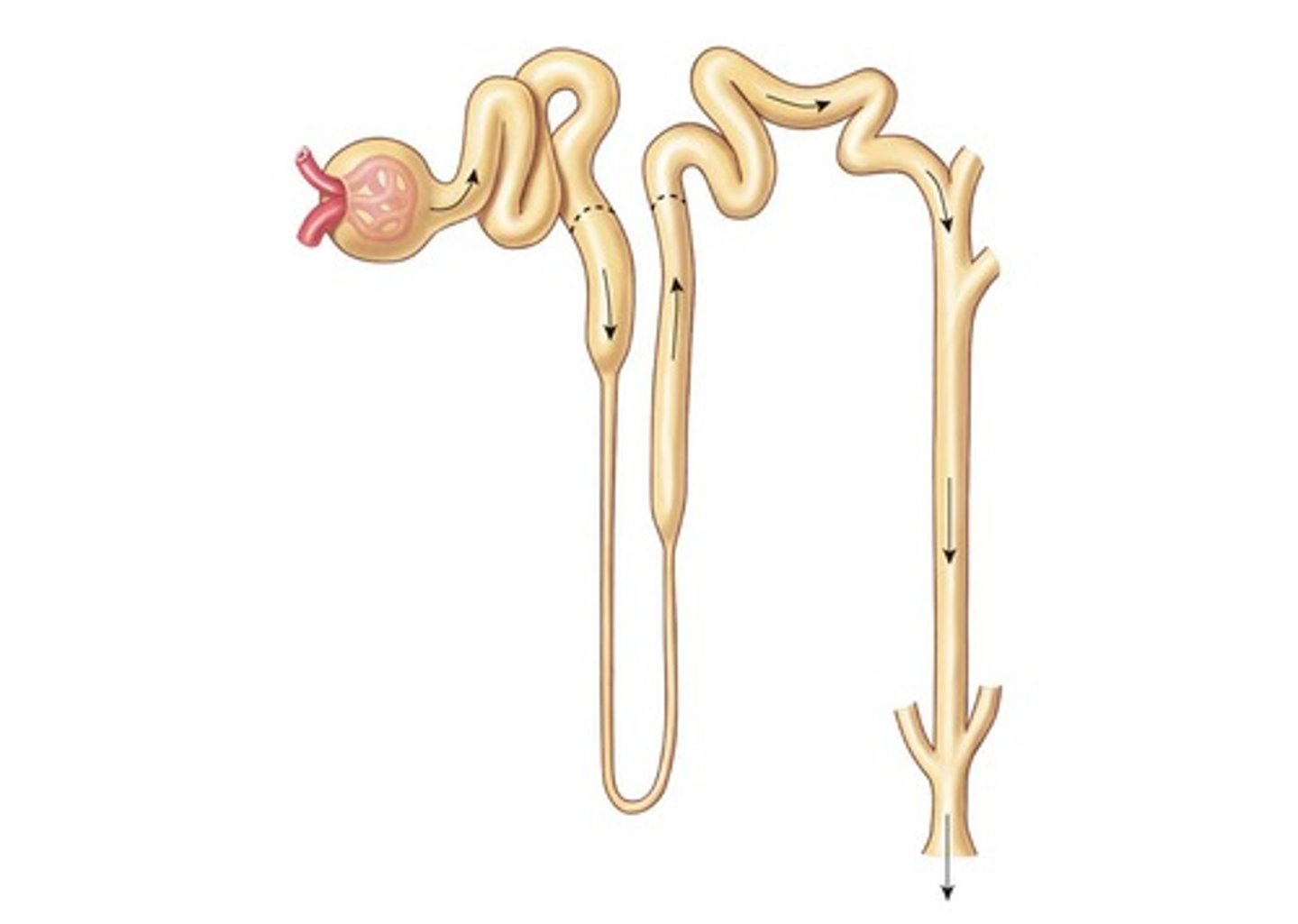
What is the juxtaglomerular complex?
It includes macula densa cells that sense NaCl and juxtaglomerular cells that sense blood pressure and release renin.
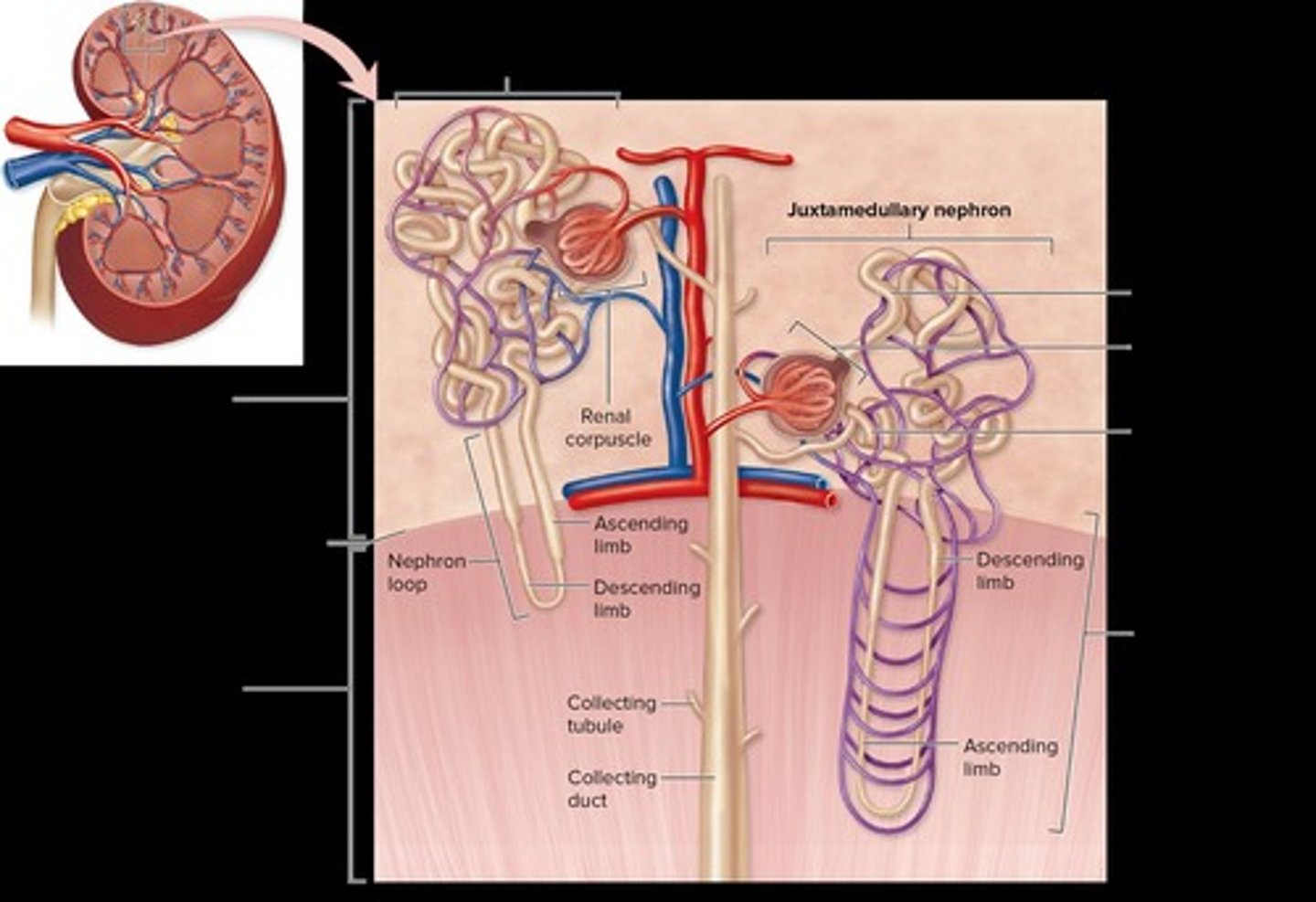
What is the Glomerular Filtration Rate (GFR)?
The volume of filtrate formed each minute by all nephrons in the kidneys.
What happens if GFR or blood pressure is too low?
Afferent arterioles stretch less, leading to vasodilation and decreased GFR.
What happens if GFR or blood pressure is too high?
Less filtrate and NaCl in the nephron loop cause macula densa to release chemicals that vasodilate afferent arterioles, increasing GFR.
What are peritubular capillaries?
Capillaries that arise from efferent arterioles, surrounding the PCT and DCT for absorption.
What is the function of the vasa recta?
To surround the nephron loop of juxtamedullary nephrons and assist in the concentration of urine.
What is the significance of the renal cortex?
It contains renal corpuscles, proximal and distal convoluted tubules, and peritubular capillaries.
What is the role of the renal pyramids?
They contain the nephron loops and collecting ducts.
What is the process of glomerular filtration?
Blood enters the glomerulus under high pressure, allowing small molecules to pass into the glomerular capsule.
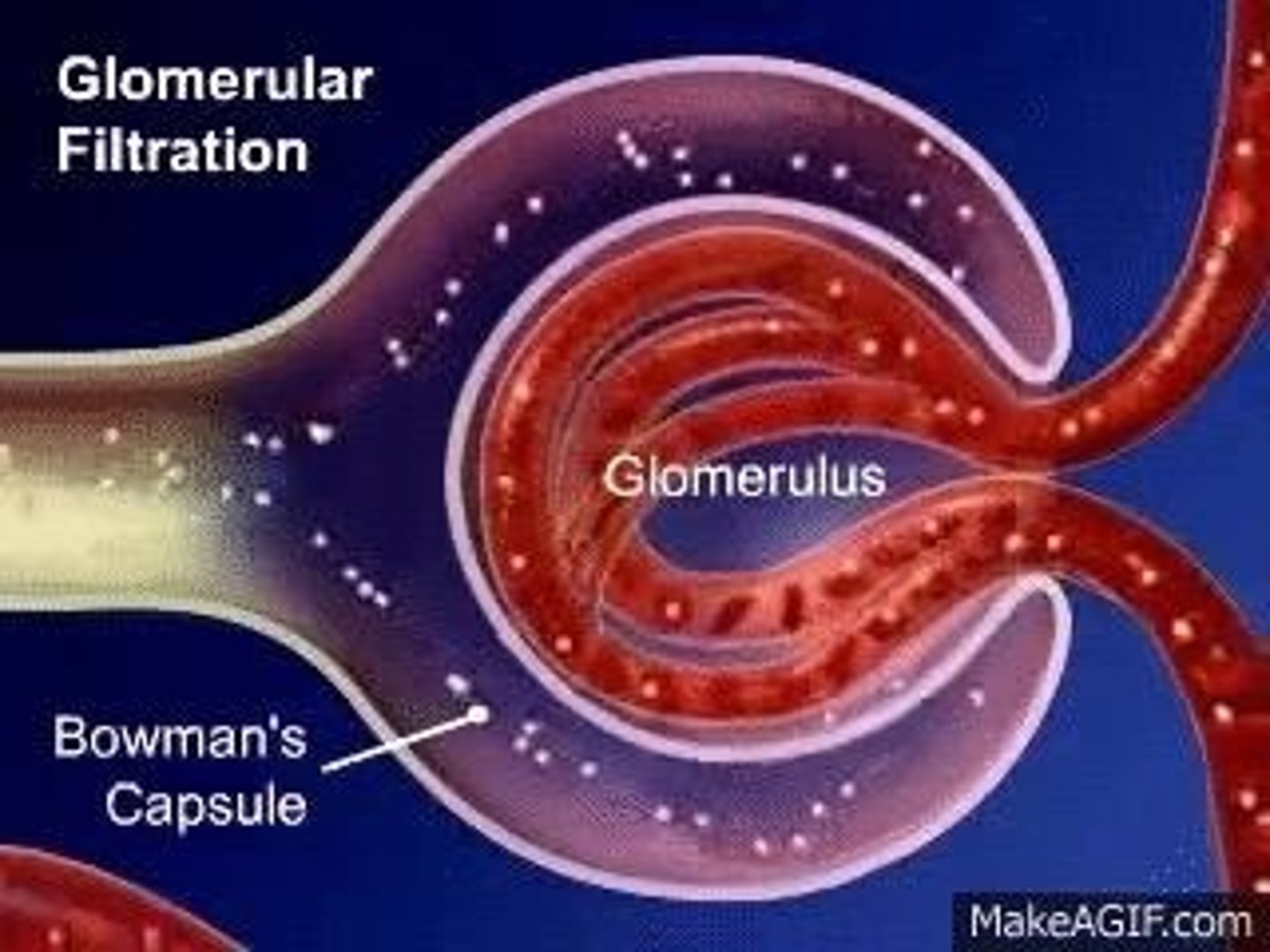
What are filterable blood components?
Small molecules that can pass through the filtration membrane, such as water, ions, and glucose.
What are non-filterable blood components?
Larger molecules like proteins and blood cells that cannot pass through the filtration membrane.
What is the importance of maintaining a constant GFR?
It ensures adequate urine output and proper kidney function.
What is hemodialysis?
A treatment that uses an artificial kidney apparatus to filter blood through a membrane.
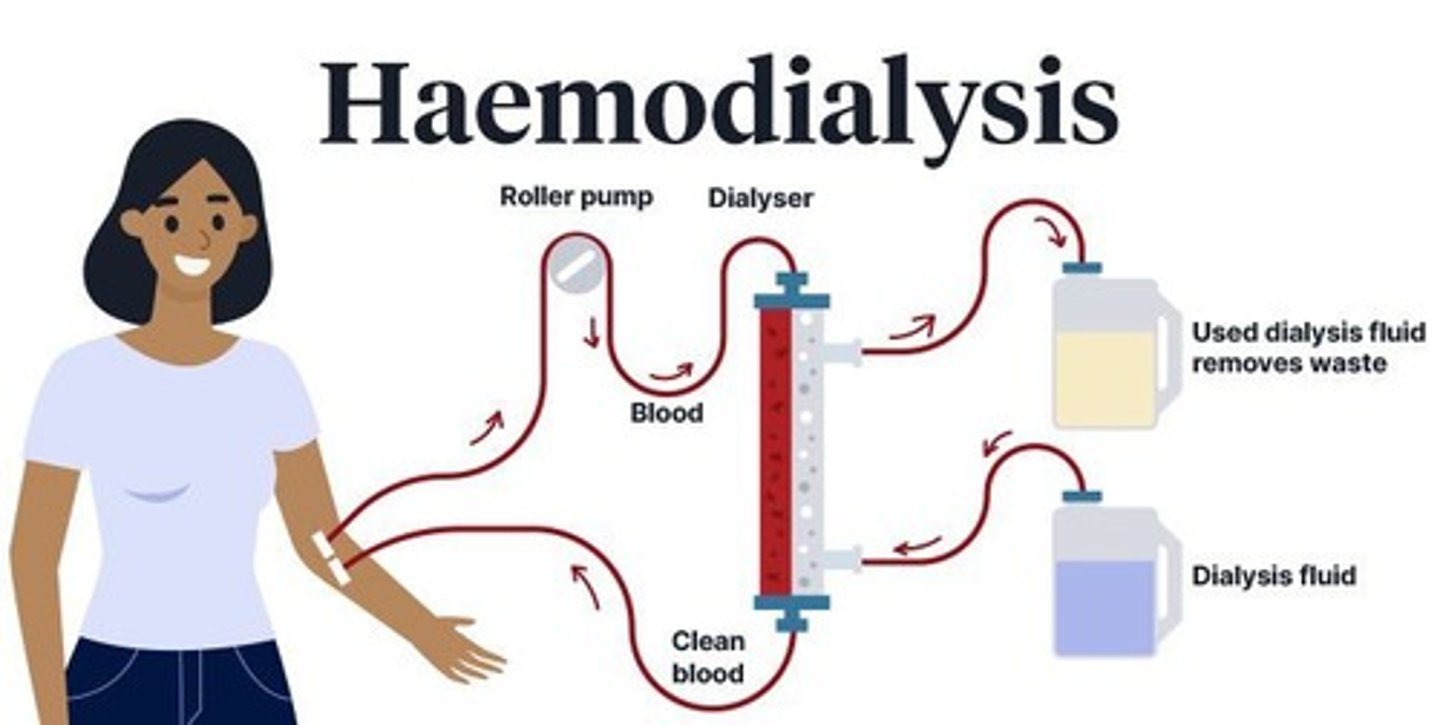
What is the consequence of chronic renal disease?
A gradual decrease in GFR, leading to reduced filtrate formation.
How does the structure of the glomerulus differ from other capillaries?
The glomerulus is fenestrated and operates under high pressure, allowing for efficient filtration.
What adaptations do peritubular capillaries have for reabsorption?
They are low-pressure, porous capillaries that facilitate the absorption of substances.
What is the role of the macula densa?
To sense sodium chloride levels and help regulate GFR.